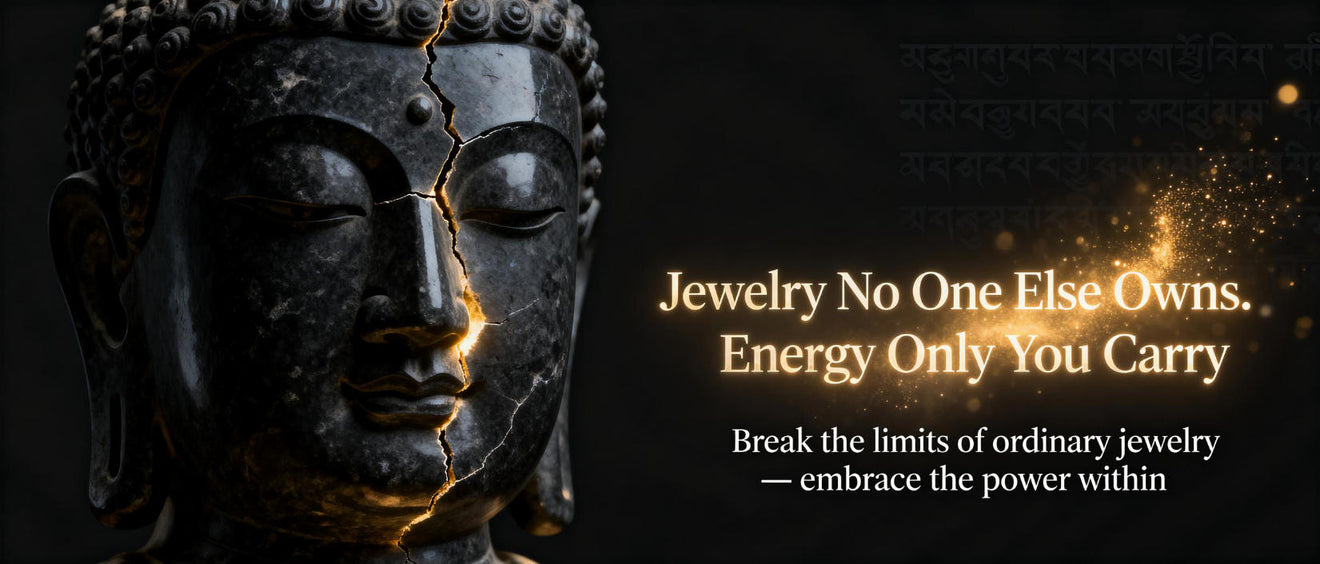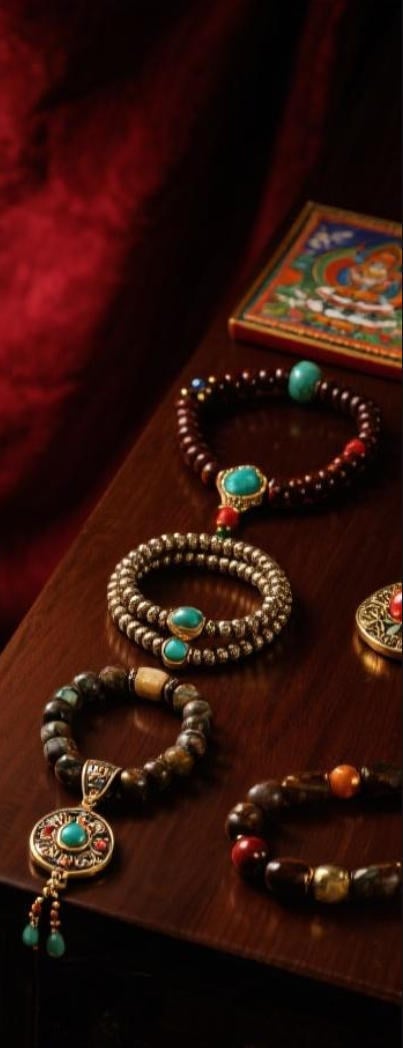
Amid the detailed mesh of Tibetan Buddhism rest two powerful symbols: the thangka and the bodhi bead. Each, uniquely expressed, facilitates linkages to metaphysical clarity. The thangka, an intricate scroll, illustrates divine figures, symbolic diagrams, or Buddhist narratives, serving as a contemplative tool.
By comparison, the bodhi bead, often crafted from fine gems, planks, berries, or skeletal fragments, is a tangible reminder of Buddha's illumination under the bodhi tree. Employing the beads assists in mental stillness.
- Collectively, the thangka and the bodhi bead express the connection of beauty and piety. They offer a tangible link to the timeless doctrines of Tibetan Buddhism.
Narratives Engraved on Camel Fragments
Over ancient epochs, historic treasures whisper tales of a world long gone. These are not ornate objects belonging to neglected empires, but unassuming camel bones inscribed with designs that retain the stories of a bygone era. All pieces keep the echo emanating from a life lived, a journey navigated, and a connection to the primeval wisdom embracing which encloses us all.
- It
- Treasures
- Serve
Understanding the Iconography of Thangka Creations
Tangkas are eye-catching paintings on canvas, meticulously crafted by Tibetan artists to depict divine figures and scenes from Buddhist literature. Each detail within a thangka is laden with meaning, forming a complex tapestry of visual narratives that guide the viewer on a meditative journey. The shades used in thangkas are not merely aesthetic choices but carry powerful connotations, indicating different aspects of the Buddhist philosophy. From the austere figures to the intricate ornamentation, thangkas offer a insight into the rich world of Tibetan Buddhism, inviting us to ruminate upon its wisdom.
- Classic thangka art often depicts key Buddhist figures such as Buddha Shakyamuni, Bodhisattvas like Avalokiteshvara and Manjushri, and enlightened beings from various traditions of Tibetan Buddhism.
- Through these representations lies a wealth of insight that can be interpreted by those who examine the symbolic language of thangkas.
Siddhartha's Path to Enlightenment: Embodied in Beads and Bone
Upon the winding path to nirvana, the Buddha utilized symbols imbued with profound resonance. All bead and material held within them the nature of his guidance, presenting glimpses into the nature of reality. Alongside their figure, the Buddha communicated profound realizations that surpass the realm of tangible perception.
From these reflective beads, crafted from valuable materials, emanated vibrations that echoed with the intense energies within. The structure of a sentient, meticulously transformed into tokens, served as tangible markers of the impermanence intrinsic to all beings.
Thangkas: Windows into Himalayan Spirituality
Thangkas radiant paintings on cloth serve as expressive representations of Himalayan spirituality. These intricate works of art, meticulously created with finest brushstrokes, depict a vast array featuring Buddhist deities, mandalas, and scenes from time-honored scriptures. Each thangka is a visual guide for meditation and contemplation, offering cognition into the refined teachings of Buddhism.
- They are often used in ritual ceremonies as part of
- inspiring states of spiritual illumination.
- Thangkas are not merely decorative elements but rather views into the rich and spellbinding world of Himalayan spiritual traditions.
Bodhi Beads as Tools for Mindfulness and Compassion
Each sphere on a bodhi bead mala whispers tales of ancient wisdom, guiding us on a expedition through the tranquil waters of mindfulness. As we clutch these intricately shaped beads, our fingers trace the contours of each one, anchoring our consideration in the present moment. The gentle feel of the beads against our palms serves as a tangible reminder to practice respiration, fostering a sense of calm.
- Whenever a bead that passes between our fingers, we encourage compassion, extending it first to ourselves and then outward to the world.
- Meditative schools teaches us that mindfulness is a method that requires patience and dedication.
Via the rhythmic repetition of mantra or simply the mindful enumerating of the beads, we unshackle from the relentless chatter of the mind.
The practice involving bodhi beads is a gentle invitation to renew our connection with ourselves and the world around us.
Manifesting Intent: Building Camel Bone Bracelets for Sacred Development
Focus represents a compelling drive in our lives, shaping our experiences and guiding us towards our sacred journey. When we combine this intention with the primordial insights of crafting a camel bone bracelet, we create a potent synergy that can expedite our spiritual growth.Camel bone represents sacred significance, representing sturdiness. Its natural beauty and enduring grace serve as a constant reminder of the core vitality within each of us.By deliberately picking each shard, channel our desires into the bracelet. With every knot or link, we implant our hopes, dreams, and aspirations for spiritual evolution. This act of creation becomes a spiritual custom, uniting us with our inner wisdom and guiding us on a expedition of realization.- Match the bone’s tones to your aspirational themes.
- Visualize your desires as you work, knotting them into the bracelet's structure.
- Bless the bracelet in ceremonies to infuse vitality.
The Enduring Impact of Camel Bone in Buddhism
In the rich tapestry of Buddhist tradition, artifacts often hold profound symbolic meaning. Amid these varied objects, camel bone stands out as a unusual and absorbing element. Across history, this material has been employed in the crafting during various Buddhist items, each imbued with specific symbolisms.
- Regarded as a symbol of resilience and strength due to the camel's ability to last in harsh environments, camel bone often stands for spiritual fortitude.
- Furthermore, the color and texture with camel bone are believed via some to hold auspicious connotations, indicating purity and serenity.
Hence, camel bone has become a prized part of Buddhist custom, serving as a tangible association to the profound teachings embodied by this ancient faith.
Thangka Masterpieces: Narratives in Color
Within the ethereal realm of Tibetan Buddhism, Thangka paintings emerge as sacred portals to enlightenment. These stunning works, meticulously crafted by skilled artists known as thangkapa, depict a myriad featuring vibrant deities, celestial beings, and mythical creatures. Each brushstroke fills profound spiritual significance, narrating ancient tales and philosophical ideas.
- Covering a vast collection of Buddhist iconography, Thangkas serve as both devotional objects and instructional tools. Devout practitioners gaze upon these paintings during rituals and meditations, seeking to acquire spiritual wisdom.
- Beautifully adorned with intricate details through a plethora of vibrant hues, Thangkas are considered windows into the divine. Every painting acts as a symbolic representation of the Divine Figure's teachings and the path to liberation.
By the use of their intense imagery and symbolism, Thangka paintings offer a glimpse into the rich doctrinal traditions of Tibet. They are a testament to the enduring grace of Tibetan art and its profound ability to invigorate.
Embracing the Duality: Thangkas and the Cycle of Life and Death
Thangkas, the richly painted Tibetan scrolls, present a deep contemplation on the ephemeral character of existence. Each intricate illustration depicts deities and beings engaged in the unceasing path of life and death, a assemblage of birth, growth, impermanence, and regeneration. The artists skillfully fuse these concepts within the thangka's universe, highlighting the linkage of all things. Through vivid imagery, they invite us to ruminate on our own being. The cycle continues, a flow of coming and going, pointing out the preciousness of each moment. By embracing this duality, thangkas teach us to cherish the beauty in both life's joys and sorrows.Chains of Spirituality: The Significance of Bracelets in Buddhist Practice
In the intricate tapestry of Buddhist practice, seemingly minimalist objects often hold profound meaning. Among these are bracelets, which serve as tangible tokens of devotion and commitment to the doctrine of Buddha. Worn on the wrist, a bracelet behaves as a constant reminder of one's aspirations and dreams. It can evoke the impermanence of life, motivating practitioners to remain stable in the present moment. Some bracelets may possess sacred etchings, such as mantras or the names of Buddhas, which are believed to attract positive energy and well-being. Others tend to be made from substances with spiritual significance, like sandalwood or lotus seeds, enhancing the bracelet's power. Ultimately, the significance of a Buddhist bracelet lies far beyond its physical form. It becomes a powerful tool for introspection, a stimulus to live in harmony with the teachings of Buddha, Thangka and a channel of one's unwavering commitment.